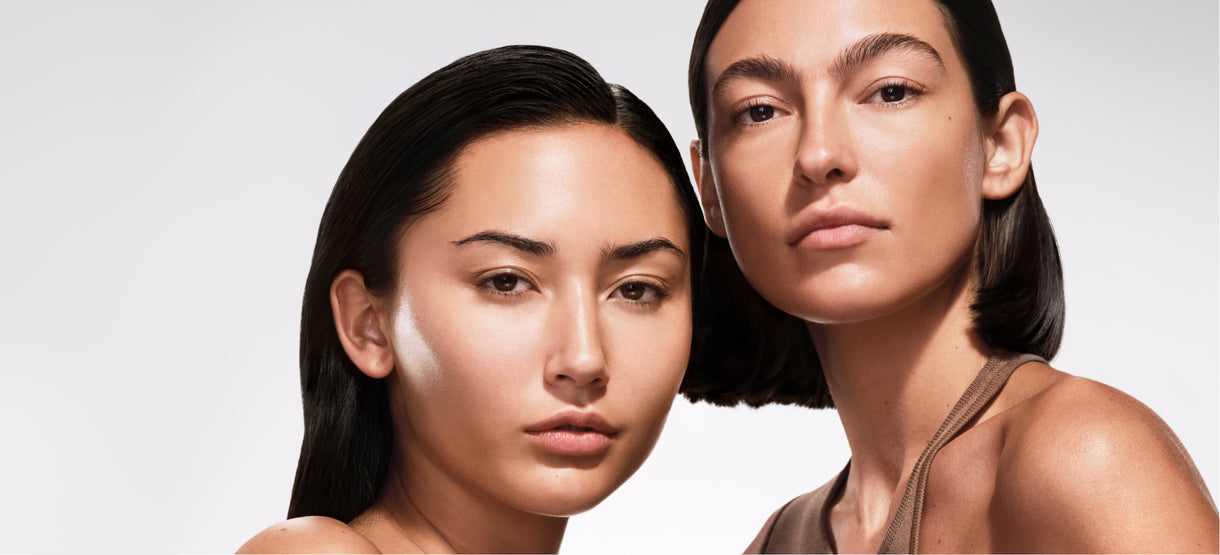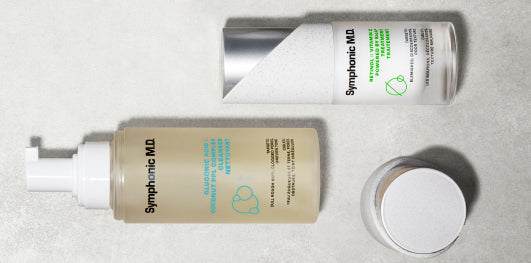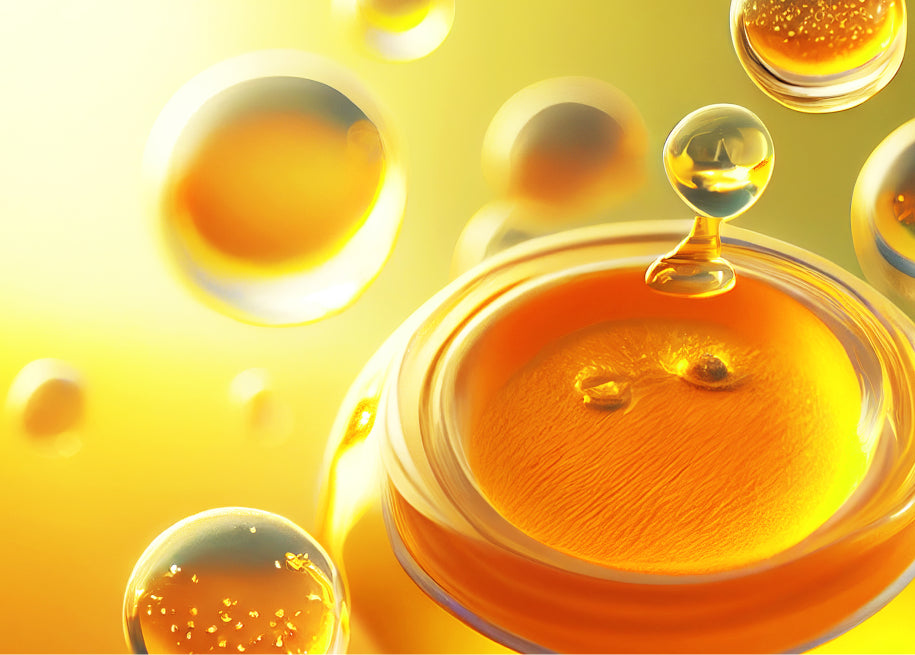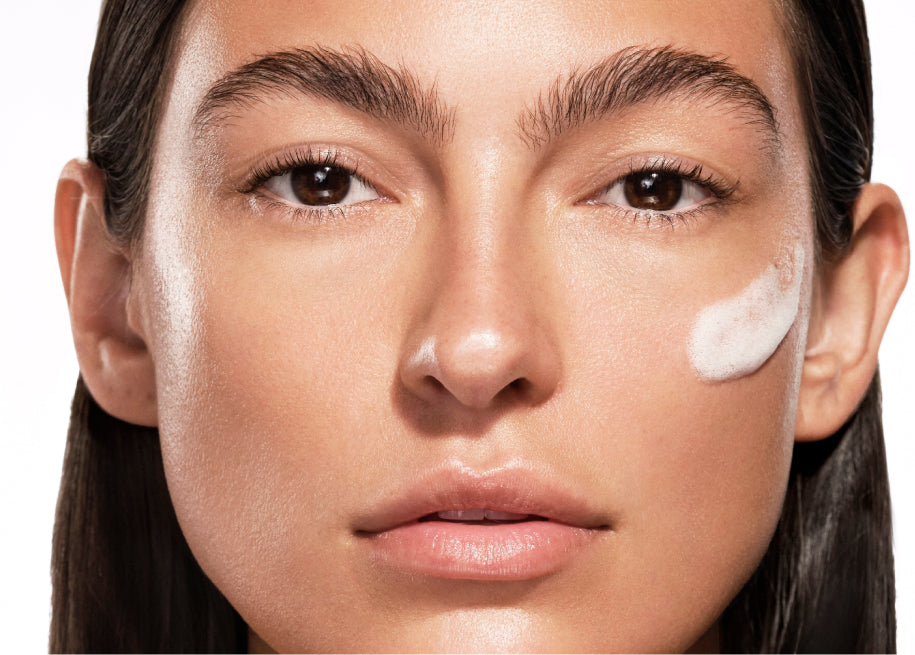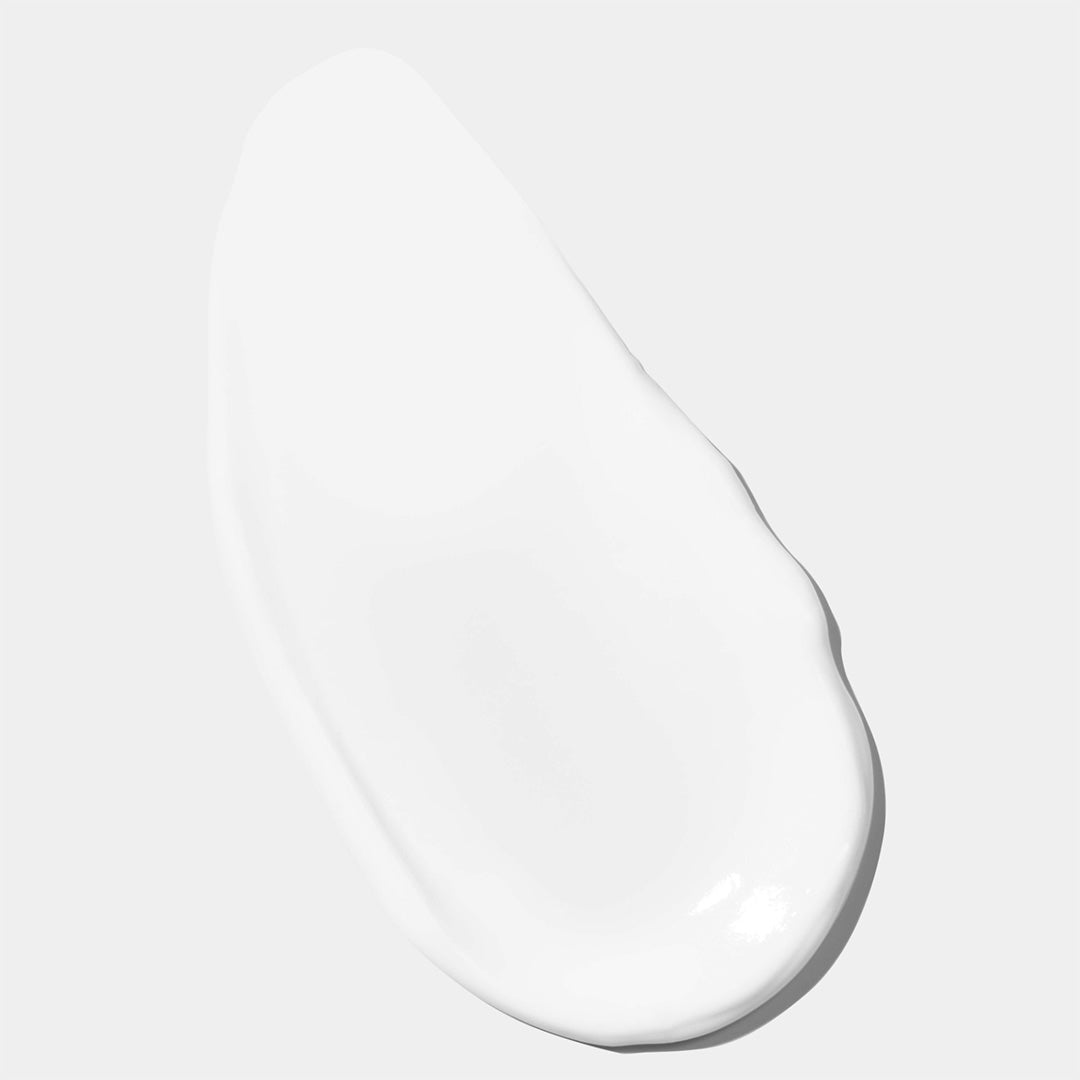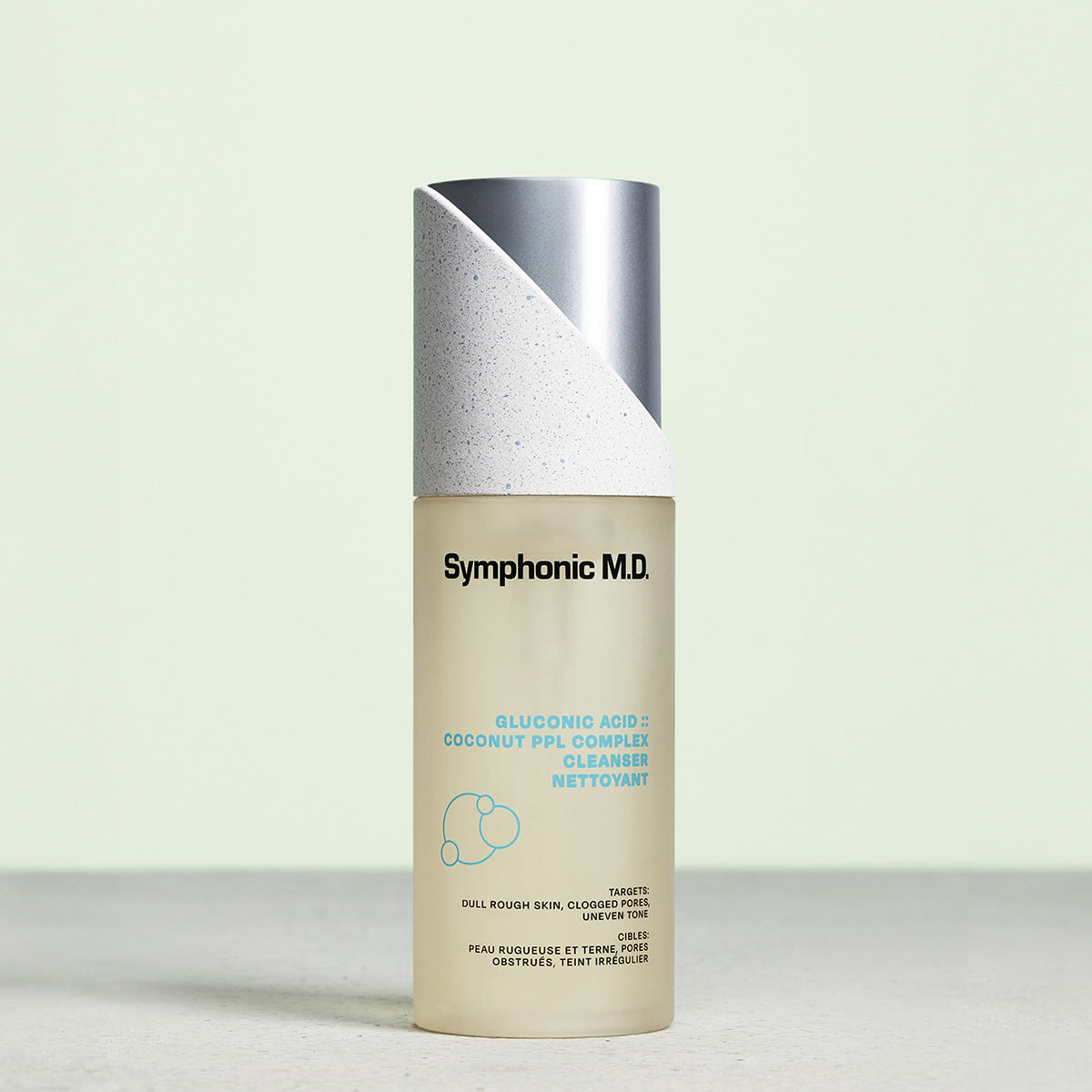Find out what retinol is, how it works, and how long you’ll have to wait for amazing skin.
What is retinol?
Retinol is derived from vitamin A. It’s often used in skincare, cosmetics, food and as a dietary supplement, because it’s fat-soluble and easy for your body to absorb.
It’s been called a miracle ingredient in skincare because it serves so many purposes — including treating acne and reducing signs of aging. There are tons of over-the-counter retinol products now available, as well as prescription-strength retinoid medications.
Difference between retinoid and retinol
Before we get into the details, let’s clear something up. There is a difference between retinoids and retinol.
“Retinoid” is an umbrella term. It covers all skincare products and medications that come from vitamin A, whether they’re over-the-counter or prescription. Dermatologists use retinoids for lots of different conditions, from acne to psoriasis and even some cancers.
Retinol is one specific retinoid, or derivative from vitamin A. It’s a powerful skincare ingredient, but doesn’t reach the level of a prescription medicine.
What does retinol do for your skin?
- Refines skin texture. Retinol triggers your skin to create new cells and get rid of old cells faster. This faster cell turnover makes for smoother, more even skin.
- Minimizes fine lines and wrinkles. Retinol fights aging in two ways: faster cell turnover, plus increased collagen production. More collagen means smoother, plumper, and more resilient skin.
- Cleans out pores. Retinol can fight acne and oily skin. As well as being an exfoliant, it can control sebum (oil) production on the skin and shrink pores.
Believe it or not, your skin may even use retinol more or less efficiently depending on your natural body chemistry.
How Long Does Retinol Take to Work?
So far, so great. However, there are plenty of people out there who have tried retinol for a week or two, and then said “It doesn’t work!”
Retinol does work. But it works over time.
You’ll probably see a quick, short-term effect from retinol’s exfoliating properties. But changes such as smoother skin and fewer wrinkles will take longer. The strength of your retinol products also makes a difference. Believe it or not, your skin may even use retinol more or less efficiently depending on your natural body chemistry.
Everybody is different and will see slightly different results. We’ve put together an average timeline to give you an idea of how long retinol takes to work.
Weeks 1-2
Some people will see improvements in the first 3-10 days. Most commonly, these include:
- Brighter skin.
- More even skin tone.
- Less visible crow’s feet and fine lines.
You probably won’t see any side effects at this stage. However, if you’re using a stronger retinoid, then you might notice some peeling skin in this phase.
Weeks 2-6
Most people see changes in their skin texture during this phase. The effects can be subtle and gradual, so if you want to make sure, you could take progress photos.
You may also see some temporary side-effects. Irritation and peeling skin are especially common if you use prescription-strength retinoids.
Your skin might also “purge”. This is the technical term for a temporary breakout. As the retinol clears out your pores and gets rid of older skin cells, your skin might go crazy for a short while … but it should soon settle down.
Months 2-4
After a couple of months, you’ll start to see retinol’s real magic.
This is because the epidermis (the outer layer of skin) renews itself every 1-2 months. By now, retinol has had a chance to affect your skin at every stage of the cycle. Any irritation and purging should be over, and you should be enjoying clear, smooth skin.
Here’s what to look for:
- Smoother skin texture.
- Fewer or no breakouts.
- Fine lines and surface wrinkles are less visible.
- Blemishes, scarring, and dark marks start to fade.
Month 6+
Past the six-month mark, your skin will have a higher rate of collagen and elastin production. Those two elements will help your skin stay firm, resilient, and smooth.
This is the point where your skin levels out. You shouldn’t see any more dramatic changes from retinol, but your skin will look fantastic. Persistent skin concerns, such as breakouts and dark marks, will be on their way out.
Retinol results for specific skin issues
As you can see from the timeline, retinol affects different skin concerns at different times. If you’re using retinol for a specific goal, then it might take more or less time to get the results you want.
Below, we’ve suggested probable timelines for a range of skin conditions including acne, psoriasis, and hyperpigmentation.

Retinol for acne
When your pores are blocked with dirt, oils, or dead skin cells, then you can develop acne — in the form of blackheads, whiteheads, and other pimples.
Retinol fights acne at the source by clearing pores, controlling oil production, and speeding up cell regeneration. However, it takes some time to work.
Some people will see changes to their acne within a few weeks of starting retinol. But most people will need at least 1-3 months of consistent use before they stop having breakouts. Don’t forget that your skin might “purge” — have a temporary breakout — as the retinol takes effect.
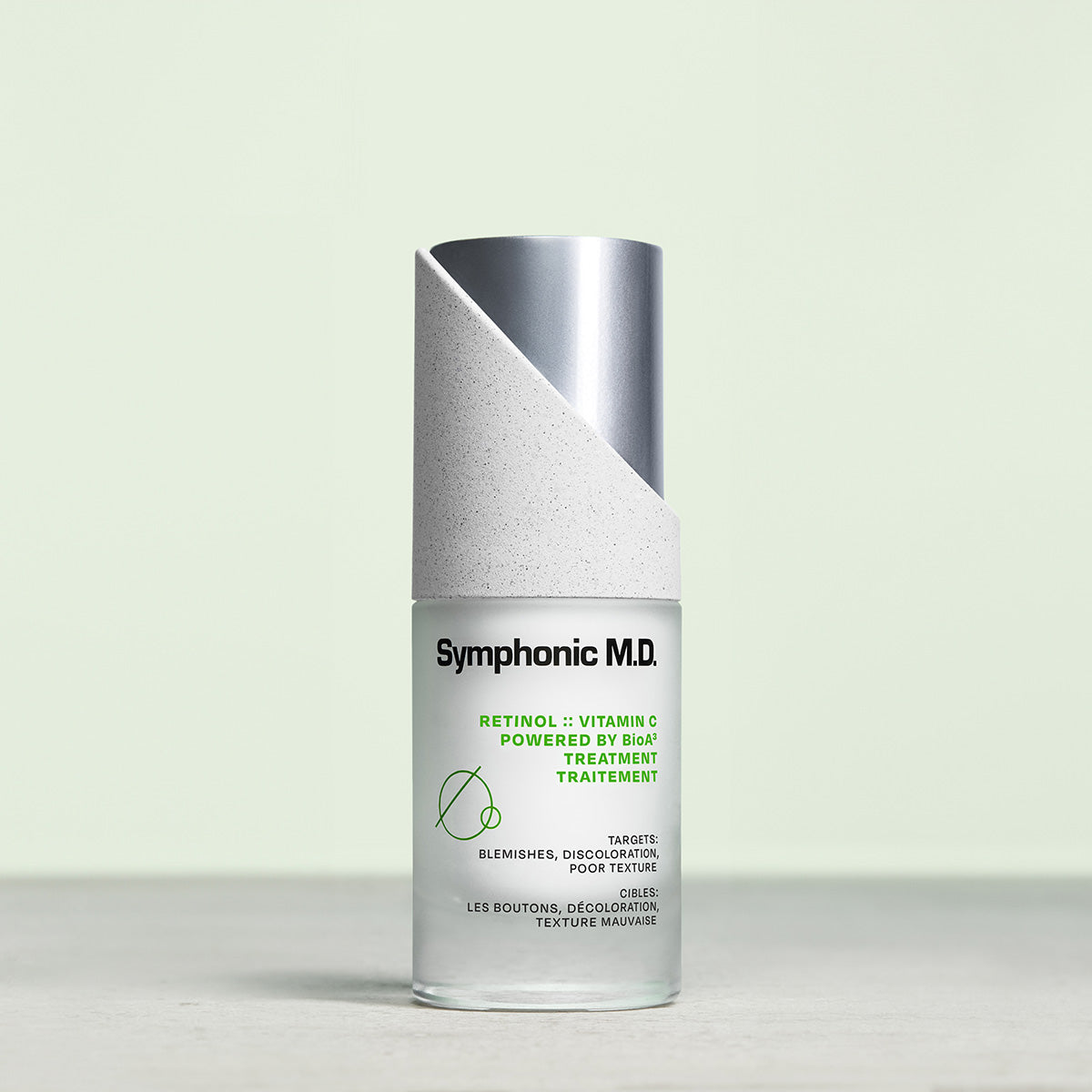
Retinol :: Vitamin C
This anti-inflammatory serum powered by BioA3 targets blemishes, tone, and texture — helping to clear bacteria and smooth skin without clogging pores.
Retinol for acne scars
It’s so tempting to pick at or pop pimples. But it can damage the skin even further … and leave permanent acne scars.
Skincare products with retinol can battle acne scarring in two ways:
- Reduce inflammation and swelling from breakouts, preventing more scars from forming.
- Boost collagen and elastin to repair skin after scarring.
As always, it takes time to see the results. 84% of people said that their skin texture improved after 4 weeks on retinol. However, it can take up to 12 weeks to start to see change to acne scarring. Significant scarring might take six months to heal.
Retinol for psoriasis
Psoriasis is a skin disorder linked to inflammation. It happens when the body produces new skin cells too quickly and they build up into a thick, scaly rash that can look pink or red.
Retinol can help with psoriasis by reducing inflammation and slowing down the overgrowth of cells.
It can take up to 6 weeks for psoriasis symptoms to start improving. Long-term management and prevention of outbreaks may take several months.
Retinol for hyperpigmentation
Hyperpigmentation is dermatology’s word for dark spots on your skin. They can develop as a result of aging and sun damage.
Some people find that retinol can lighten dark spots, although this is a long-term effect. You probably won’t see a change before 12 weeks. You’ll also need to watch out for skin irritation as a side-effect.
How do you know if retinol is working?
Everyone’s experience with retinol will be different, so it’s hard to say exactly when you’ll see results.
Some people will start to notice changes right away, while others will need more patience. However, most people will see their skin getting clearer and smoother after 2-4 months of using retinol.
It’s a good idea to take photos of your skin before you start using retinol. Although changes to your skin might be small and gradual, the photos will help you notice progress over time.
Possible side effects of retinol
Retinol can cause side effects, especially while your skin is adjusting to it.
The most common ones are dry skin and irritation. Skin may look red, scaly, or flaky for a while, and you might feel an itching or burning sensation. Retinol also makes your skin more sensitive to the sun, so you will be more likely to get sunburn while using retinol products.
The benefits of using retinol
Retinol takes time and effort to get results. But here are some of the benefits that you can look forward to:
- Increased skin elasticity.
- Slower melanin production, resulting in fewer dark spots.
- Reduced inflammation.
- Fewer clogged pores.
- Repaired sun damage.
- Reduced signs of aging, including wrinkles and fine lines.
- Clearer and brighter skin overall.

Most people will see their skin getting clearer and smoother after 2-4 months of using retinol.
Retinol serum vs retinol cream
Retinol is available in many different skincare products. The most popular are serums and moisturizers.
Serums have higher concentrations of active ingredients, with a higher dose of retinol. Because they’re thin and light, they penetrate deep into the skin. They’re also popular with people who have oily or combination skin.
However, you should still look for serum formulas which are hydrating and protective. And even then, you’ll need to apply a moisturizer on top.
Creams create a skin barrier that stops your skin from losing moisture. If you have dry or sensitive skin, or you’re concerned about side effects, then a retinol cream may work better for you.
Introducing our Retinol :: Vitamin C Powered by BioA3 moisturizer
Our Retinol :: Vitamin C Powered by BioA3 Treatment moisturizer gives you all the benefits of retinol — with a clarifying, hydrating effect. The added vitamin C clears away bacteria and brightens skin, while soothing agents in our proprietary BioA3 formula calm irritation and add moisture back into skin.
Clinical trials have shown that our Retinol :: Vitamin C Powered by BioA3 moisturizer has no side effects, even when used on sensitive skin. It uses Retinyl Sunflowerate — a unique formulation drawn from sunflowers — which moisturizes while it repairs skin. You’ll see smoother skin with less acne and blemishes in just 2-4 weeks.
Not sure about using retinol and vitamin C together? Learn everything about combining these powerful ingredients in our guide: Retinol and Vitamin C: Can You Use Vitamin C with Retinol?
You’ll see smoother skin with less acne and blemishes in just 2-4 weeks.
How to use retinol
If you’re new to retinol, the key is to start slow. Begin by using a small amount of retinol moisturizer every few days, then gradually build up the amount and frequency as your skin adjusts. For the first few weeks, you should only use retinol every other day at the most.
If you’re using prescription retinoids, don’t try any other retinols or retinoids alongside it. Always follow your dermatologist’s advice.
Steps for using retinol
Following the right skincare routine will make retinol more effective for your skin. Try these tips to get the best possible results.
- Cleanse your skin with a gentle cleanser and pat it dry. Don’t scrub or exfoliate harshly while you’re using retinol.
- Do a patch test of your retinol cream or serum first, to check how your skin reacts.
- Apply a thin layer of retinol to your entire face, avoiding your mouth, nose and eyes. If you’re using a serum, you only need an amount about the size of a pea to cover your face. If you use moisturizer, you can take a larger amount.
- If you use a retinol serum, finish with a light moisturizer to rehydrate skin without blocking pores. (If you’re using a retinol moisturizer, then your skin will already be hydrated.)

When should I start using retinol?
It’s never too early to start using retinol — even if you’re not worried about aging yet!
If you start using retinol in your twenties, it will help to maintain your collagen levels as you get older. That means smoother, clearer, and firmer skin.
Can I use retinol every day?
Some people find that using retinol every day works for them. However, you should take the time to build up your routine slowly, rather than jumping right in. Your skin will need time to adapt to retinol.
When should you avoid using retinol?
Retinol may not be the right choice for you if you have allergies that make your skin prone to redness, itching, or irritation. Some people with sensitive skin also find retinol difficult to use.
- If you have a skin condition such as rosacea, talk to your dermatologist before trying any new retinol products. You should also avoid retinol and retinoids if you’re pregnant.
The bottom line
Some people will see results from retinol almost immediately. However, it’s more common to use retinol for weeks or months before you start seeing big changes to your skin.
You can take progress pictures during the first six months of retinol so that you can see improvements over time. By the end of six months, you should see real changes in your skin tone and texture.
FAQs
Can I go in the sun when using retinol?
Most dermatologists recommend using retinol in your evening skincare routine.
There are two reasons for this:
- Retinol breaks down under UV light, making it much less effective in daylight.
- Retinol makes your skin more sensitive to the sun and likely to burn. Even if you use retinol at night, you should be careful and wear sunscreen during the day.
How common is purging?
Purging is when your skin breaks out as retinol begins to clear out your pores. It’s normal and quite common: almost everyone will experience some purging when they start retinol. However, it should usually be over in 2-4 weeks.
How can I manage the side effects of retinol?
There are ways that you can minimize the negative side effects of starting retinol.
To begin with, only use a small amount of product — and use it every other day. This gives your skin time to adapt to the retinol. Over time, you can build up to using it every day.
Make sure that you’re not putting your skin under any unnecessary stress. Don’t use retinol while you have sunburn, broken skin, or irritated skin, and always wear sunscreen with at least SPF 30 to avoid burns. To be extra careful, you should also wait 30 minutes after cleansing your face before you apply retinol.
You should always follow your dermatologist’s recommendations above all else. Don’t use more than one retinol product at a time: give your chosen product a chance to work.
